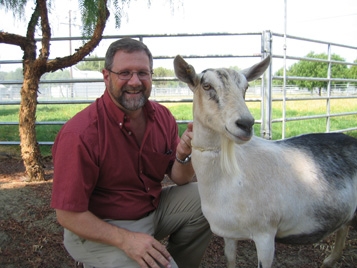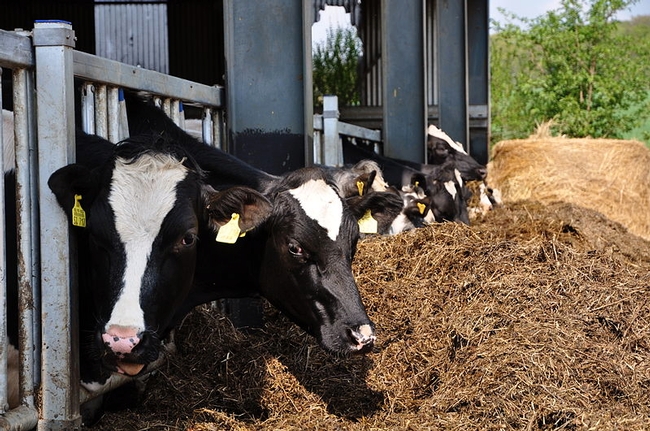Posts Tagged: genetically modified organism
Chinese scientists use biotechnology to develop tiny pig pets
In the story, a UC Agriculture and Natural Resources expert expressed disappointment in the company's plan to market mini pigs as pets. Alison Van Eenennaam, UC ANR Cooperative Extension specialist in the Department of Animal Science at UC Davis, said the company's decision reflects the "global regulatory gridlock" around genetically engineered food animals.
"Genome editing is a powerful technology that can be used for many beneficial applications … such as producing disease-resistant animals and other things that would have real benefits for the sustainability of food production," she said.
Americans seem to be open to genetically engineered pets. A glowing fish created in Singapore by inserting jellyfish and sea anemone genes into zebrafish eggs has been accepted by many U.S. consumers.
"People are happy to have them in their aquarium, but it's when it's on their dinner plat that they have a different attitude," Van Eenennaam said.
Scientists used different processes in creating glowing fish and miniature swine. With the fish, genes from other organisms were inserted into the DNA. The mini pigs were made by cutting tidbits of DNA out of the pig genome. According to the article, Van Eenennaam believes gene editing animals is no different from traditional selective breeding. Furthermore, she said the FDA's unwillingness to approved genetically engineered food animals is impeding the technology. Companies are deterred from investing in research by the uncertainty.
"(There's too much financial risk) if you go to all the effort of making an animal and it's unclear whether you're going to be able to market it," Van Eenennaam said.
Humboldt County voters to weigh in on GMOs
Alison Van Eenennaam, UCCE specialist in the Department of Animal Science at UC Davis, said there are thousands of scientific studies that have shown that GMOs are not dangerous. Van Eenannaam herself published a review in September that examined 30 years of livestock-feeding studies that represent more than 100 billion animals. She concluded that the performance and health of food-producing animals consuming genetically engineered feed has been comparable to that of animals consuming non-GE feed.
Van Eenennaam cautioned the North Coast Journal reporter that "you can't just say 'GE is safe.'"
"That's too broad," she said. "That's like saying 'electricity is safe.' People who've been in the electric chair would disagree."
One can't say that traditional breeding is "safe," either. People have been breeding organisms to select for specific traits, and creating hybrids by crossing two species (such as a horse and donkey to get a mule) for thousands of years, the article said.
In San Luis Obispo County, where a measure banning GMOs failed in 2004, organic farmers are using buffers and communication with neighbors to allow farmers who use GMOs to coexist with non-GMO farmers.
"Coexistence is not a new idea,"said Mary Bianchi, director of SLO County UCCE. But it's been working. And, she says, nobody has pushed for a GMO-ban in San Luis Obispo County since.
The director of UC Cooperative Extension in Humboldt County, Yana Valachovic, said she and her office haven't taken a side in the debate over the Humboldt County measure.
She said she believes the issue boils down to one question: "Are we more concerned about the risks or more hopeful of the opportunities?"
Unfounded fear of GMOs keeps good food out of the marketplace
Food created through genetic engineering and conventional breeding are safe and they deserve equal treatment in the marketplace, a UC Berkeley biotechnology expert told reporter Lisa Krieger of the San Jose Mercury News.
Peggy G. Lemaux, UC Cooperative Extension specialist in the Department Plant and Microbial Biology at UC Berkeley, says fear of the unknown can stop genetic engineering from helping consumers. She genetically engineered wheat to produce grain that is less allergenic and might be better tolerated by people with wheat allergies. Because of anti-genetic-engineering sentiment, she said, companies that could take it to market did not embrace it.
"No one is interested in moving it to the marketplace," Lemaux said.
The Mercury News article was centered on Proposition 37, an initiative on California's November ballot that, if passed, will require labeling on genetically engineered food.
Transgenic goats' life-saving potential under study in Brazil
Technology developed by UC Davis animal scientist James Murray that could significantly reduce human suffering and death from diarrhea has found a home in Brazil.
Goats genetically altered to produce milk that prevents diarrhea have been in development in Murray's Davis lab for decades, according to an article in Technology Review. However, sensitivity to the idea of bioengineered animals in the United States has severely limited research funding. Currently the project is supported with a three-year, $400,000 USDA grant to assess the risks of transgenic animals.
"The only money available is to look at environmental safety. It's a backwards way of funding the research," Murray is quoted in the article. "We haven't gotten enough to move the research forward; we are four or five years behind where we should be."
In Brazil, where diarrhea is the fifth or sixth most common killer of children under five, the government has pledged $3.5 million to establish a herd of transgenic goats and initiate human trials on their milk.
"I think it's brilliant," Murray was quoted. "We want to see it used. We don't care which country does it."
The goats in Murray's lab were engineered to express large amounts of human lysozyme, a protein found in human milk, tears and saliva that destroys the cell walls of bacteria. Drinking the milk would inhibit establishment of the diarrhea organism.
The milk from transgenic goats could enter human trials in elementary school children within two years, the article said. If it proves effective, the Brazilian researchers hope they can powder the milk and export it other countries where many children are afflicted with diarrhea.

James Murray



